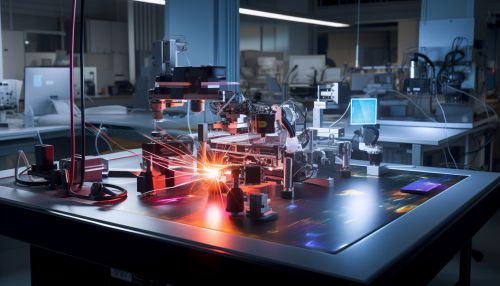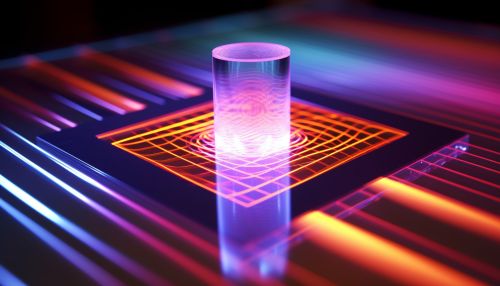The Physics of Photonic Crystals and Their Applications
Introduction
Photonic crystals are periodic optical nanostructures that affect the motion of photons in much the same way that ionic lattices affect electrons in solids. The periodicity of these structures is at the length scale of optical wavelengths, which allows them to manipulate light in unique ways. They are a fascinating area of study in the field of physics, particularly in the subfield of optics.


Structure and Properties of Photonic Crystals
Photonic crystals are made up of periodic dielectric structures that have a spatial periodicity in their refractive index. This periodicity can be one-dimensional, two-dimensional, or three-dimensional. The refractive index contrast and the periodicity of the structure determine the properties of the photonic crystal.
The most significant property of photonic crystals is the presence of a photonic bandgap. This is a range of wavelengths (or frequencies) for which light cannot propagate through the crystal. The photonic bandgap is analogous to the electronic bandgap in a semiconductor, which is a range of energy levels at which no electron states can exist.


Fabrication of Photonic Crystals
There are several methods for fabricating photonic crystals, each with its own advantages and disadvantages. Some of the most common methods include lithography, holography, and self-assembly. Lithography is a process where a pattern is etched onto a substrate using a beam of light or electrons. Holography involves the interference of light waves to create a three-dimensional image, which can then be used as a template for the photonic crystal. Self-assembly is a process where the components of the crystal spontaneously organize themselves into a periodic structure.


Applications of Photonic Crystals
Photonic crystals have a wide range of applications in various fields. In telecommunications, they can be used to create filters that allow certain wavelengths of light to pass while blocking others. This can be used to increase the capacity of optical fiber networks. In the field of medicine, photonic crystals can be used in biosensors to detect small amounts of biological molecules. They can also be used in the development of more efficient solar cells, as they can manipulate light to increase the absorption of sunlight.


Future Directions
The study of photonic crystals is a rapidly evolving field, with new applications being discovered regularly. One promising area of research is the development of photonic crystal lasers. These lasers could potentially be much more efficient than conventional lasers, as they can confine light in a much smaller volume. Another area of research is the use of photonic crystals in quantum computing. Photonic crystals could potentially be used to create quantum bits, or qubits, which are the fundamental units of information in a quantum computer.


